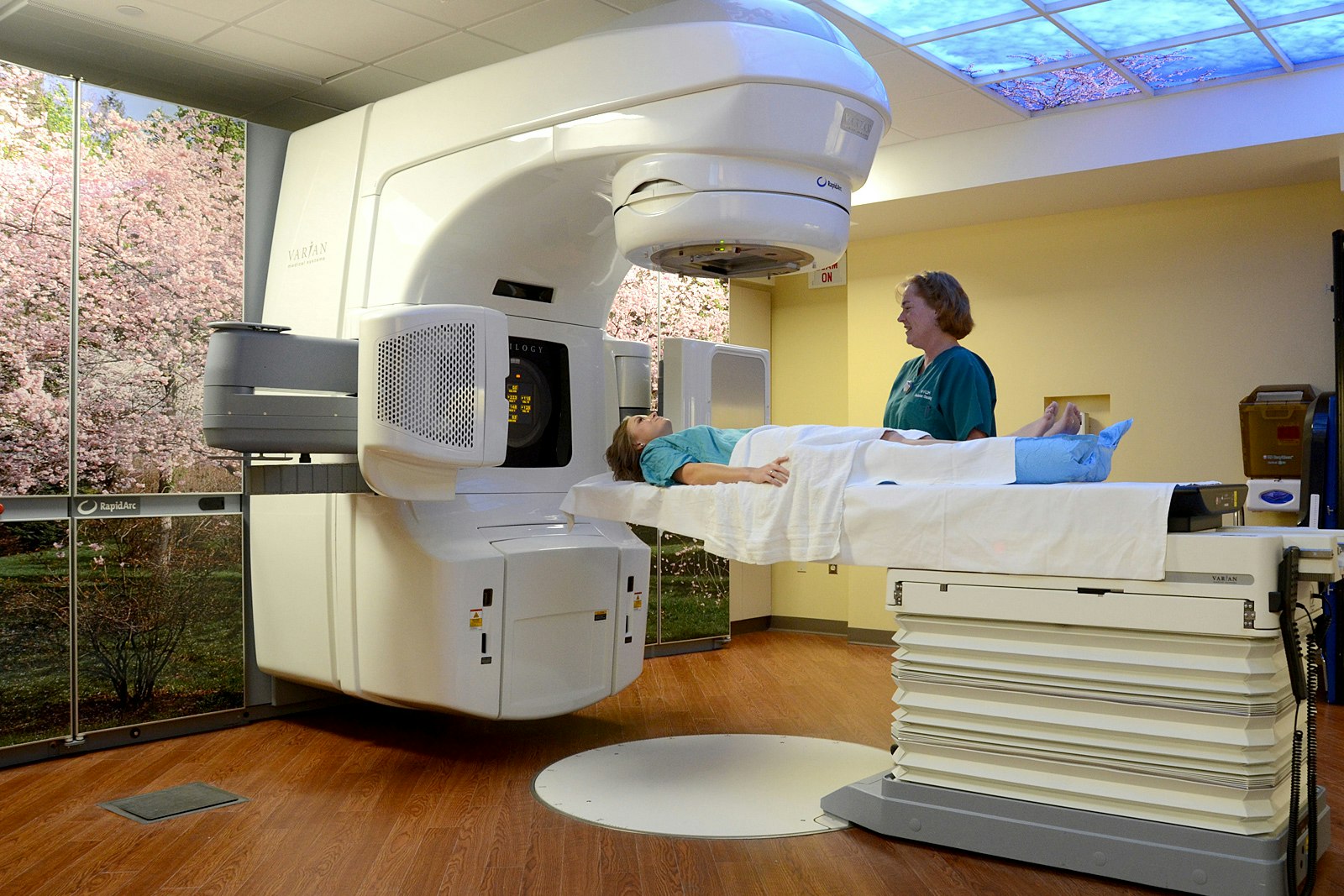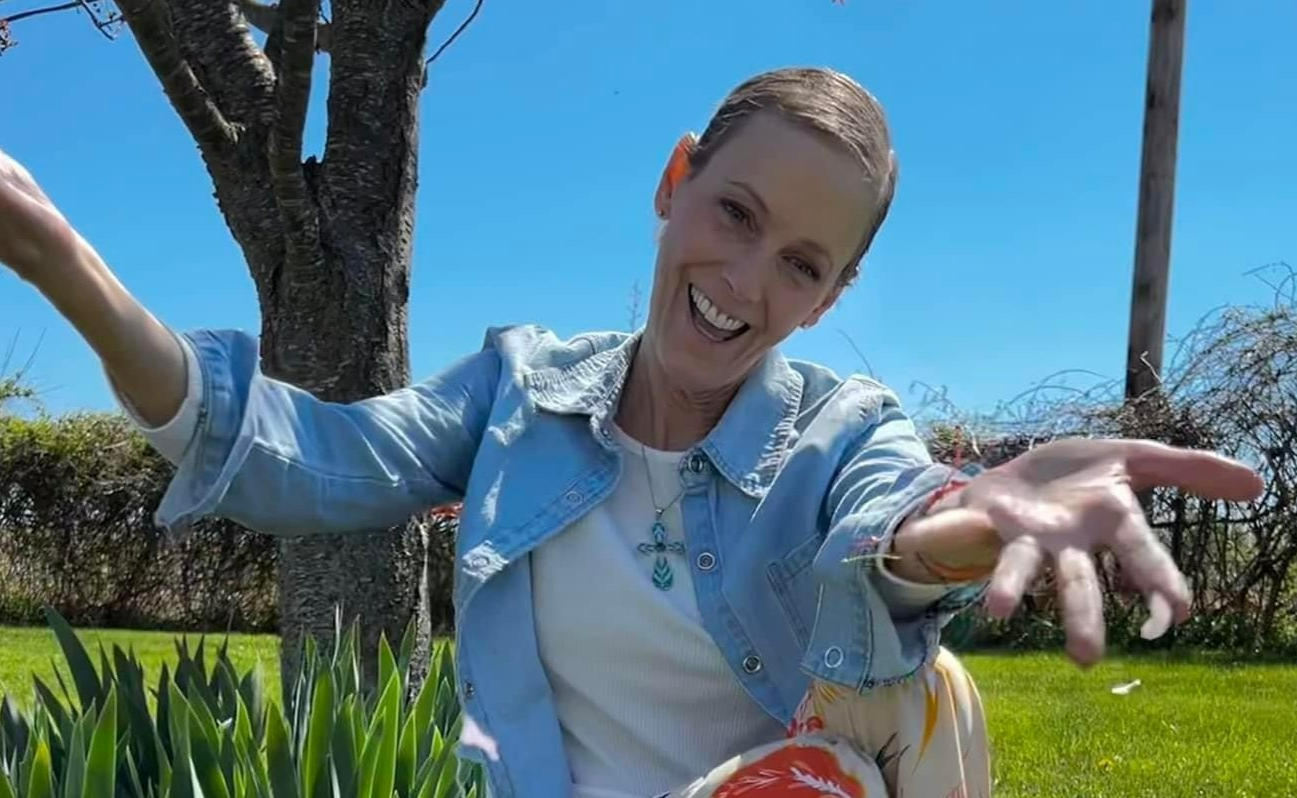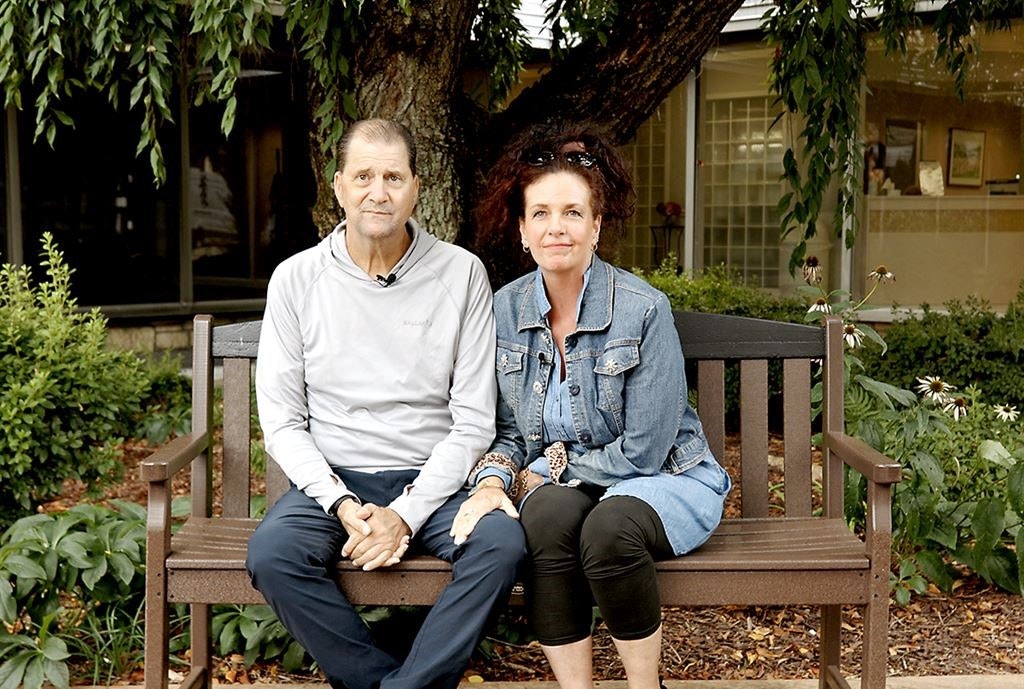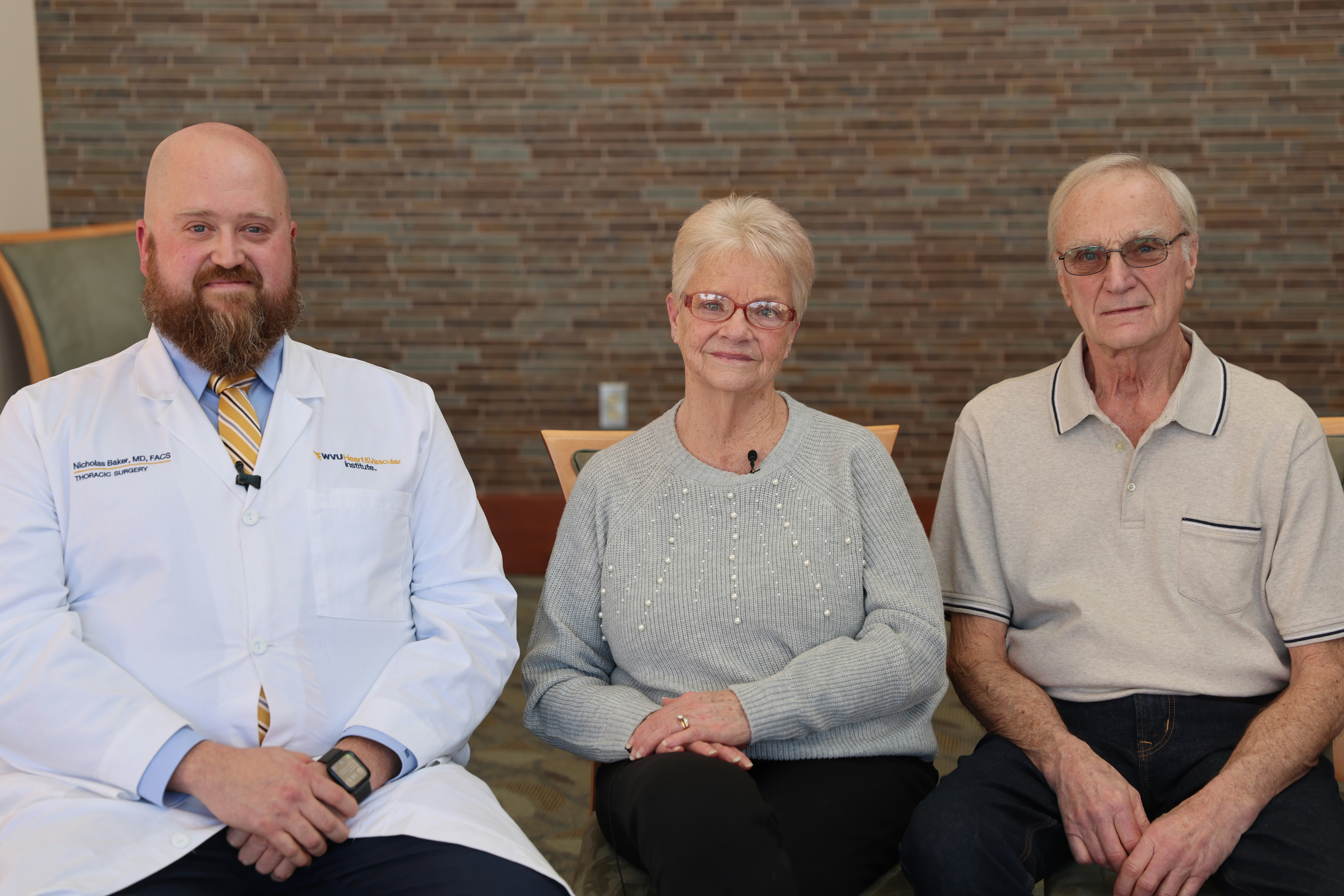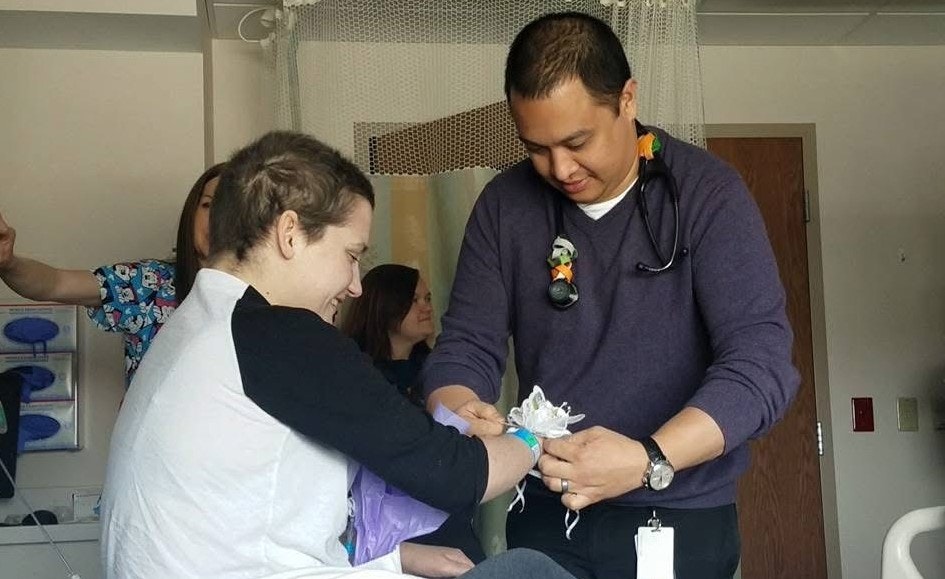At the WVU Cancer Institute and the Betty Puskar Breast Care Center, our team works every day to put an end to breast cancer. Our complete breast cancer program offers you individualized, state-of-the-art care, no matter what your needs are.
Our comprehensive breast care program treats women with breast health and breast cancer care needs. You’ll find a caring and compassionate team here — one who gets to know you and your needs. Our facilities and environment are warm and welcoming.
The uniqueness of the breast care program allows patients to see breast surgeons and medical and radiation oncologists, plastic and reconstructive surgeons, genetic counselors, social workers, and clinical trial specialists during the same appointment and under one roof. We call this “all-in-one breast care.”
The Betty Puskar Breast Care Center is accredited by the American College of Radiology. It is federally certified by the Food and Drug Administration (FDA) under the Mammography Quality Standards Act to provide quality breast imaging. Our breast-specific radiologists are experts in the diagnosis of breast abnormalities.
We offer screening and diagnostic procedures, including advanced imaging services, along with treatment and survivorship care.
Our breast care program is one of only three centers in West Virginia accredited by the National Accreditation Program for Breast Centers (NAPBC). Since 2014, the WVU Cancer Institute has participated in rigorous evaluations and reviews of our performance. We continuously demonstrate our commitment to providing the best possible care to those with diseases of the breast. With each recertification, we are one of a small group of programs that receives full accreditation without the need for modifications of our structure and practice.
Types of Breast Cancers We Treat
Breast cancer starts in the breast, where abnormal cells grow out of control. These cells form a tumor that can often be felt or seen through imaging. Breast cancer may start in different parts of the breast, including the breast ducts (ducts that carry milk), glands, and breast tissues.
It’s important to know that not all breast lumps are cancerous – most are noncancerous. There are many different types of breast cancers. We treat all common and rare breast cancers.
Ductal carcinoma in situ (DCIS)
This early-stage breast cancer is easily treated. It’s a non-invasive breast cancer that has not spread to nearby breast tissue. However, DCIS may become an invasive cancer.
Inflammatory breast cancer
This is a rare breast cancer that is often a type of invasive ductal carcinoma. Symptoms include swelling, redness, and dimpling of the skin breast.
Invasive ductal carcinoma
This is the most common type of invasive breast cancer. It starts in the cells that line a milk duct and spreads to nearby tissue. This type of cancer may spread to other parts of the body.
Invasive lobular carcinoma
This form of breast cancer starts in the glands (lobules) that produce breast milk and spreads to nearby tissue. It may also spread to other parts of the body.
Male breast cancer
Although breast cancer in males is rare (one percent of all breast cancers diagnosed), it is important for men to bring breast masses to the attention of their provider.
Metastatic breast cancer
This type of cancer is known as stage IV or advanced breast cancer because it has metastasized (spread) to other parts of the body. Metastatic breast cancer is found in different body organs, including the bones, liver, lungs, and brain.
Paget disease
This is a rare breast cancer that involves the skin of the nipple. This type of cancer is often found along with DCIS or invasive breast cancer.
Recurrent breast cancer
If cancer returns after previous cancer treatment, it is called recurrent cancer. Recurrent cancer might come back in the original breast cancer area or somewhere else in the body. If breast cancer spreads to a new part of the body, it’s still called breast cancer, but now it is considered metastatic.
Triple-negative breast cancer
This type of cancer is more common in younger women who are African American or women who have an inherited gene mutation called BRCA1. Triple-negative breast cancer means that the cancer cells don’t have estrogen or progesterone receptors and don’t make the protein called HER2.
Diagnosing Breast Cancer
There are different ways to diagnose breast cancer. You need to talk to your doctor if you experience pain in your breasts or underarm or feel a lump in your breast area or chest.
If your doctor is concerned, specific tests will explain what is going on in your body. Because noncancerous conditions can also cause symptoms, we will talk with you about any necessary imaging to determine the next steps.
We offer the latest approaches to diagnosing breast cancer, including:
- 3D mammography (screening) — Doctors use this advanced technology, also called tomosynthesis, to take multiple images (x-rays) of breast tissue from many angles and create a three-dimensional picture of the breast.
- Diagnostic mammogram — Doctors may recommend a diagnostic mammogram if you have a problem in your breast, such as a lump or an area that looks abnormal on a screening mammogram. A diagnostic mammogram takes more detailed x-rays of the breast.
- Screening ultrasound – This is used to screen extremely dense or heterogeneously dense breasts as a supplement to a screening mammogram. You may need a diagnostic ultrasound after this.
- Diagnostic ultrasound — This form of ultrasound uses a probe to look at certain areas of the breast in a different way. Diagnostic ultrasound targets a specific area and is a great way to look for solid masses or cysts.
- Breast MRI — Doctors use this test to scan the breast for signs of abnormalities. A breast MRI uses a magnet linked to a computer and takes detailed pictures of areas inside the breast. This is not a screening test for the majority of women.
- Ductography — Doctors perform this procedure on people who have a bloody or clear discharge from one nipple. Using a thin catheter (tube) inserted into the nipple and a small amount of contrast dye, doctors are able to more easily see the duct on the x-ray. This procedure is rarely used.
- Biopsy — Doctors remove a small sample of tissue to examine under a microscope and determine whether cancer is present. If a biopsy result is noncancerous, further surgery or treatment is usually not necessary. If a biopsy result is cancerous, it helps oncologists plan the best treatment for you. Several different biopsy types include core needle biopsy, fine-needle aspiration biopsy (both can be done with image-guidance like ultrasound, mammogram, or MRI), punch biopsy, and excisional biopsy.
Treatment for Breast Cancer
Our compassionate team of breast cancer experts designs a treatment plan that addresses your specific needs. We consider many factors when planning your treatment, including the cancer type, the location and size of the tumor, your age, and whether the cancer is new, recurrent, or metastasized, as well as your personal goals for your cancer care. We often treat breast cancers using surgery, radiation therapy, and systemic therapy that may include chemotherapy. We treat some breast cancers using intraoperative radiation therapy. We offer the latest treatments, including:
- Medical oncology — Medical oncology includes chemotherapy, immunotherapy, targeted therapy, and anti-hormone therapy. Our doctors use the latest in anti-cancer medicine to destroy cancer cells. We also use medicines to slow cancer growth and shrink tumors before surgery (neoadjuvant). Sometimes, we use medication alongside other treatments such as radiation or after surgery to destroy any cancer cells that might remain.
- Infusion therapy — Our doctors give medicine and fluids through a catheter into your bloodstream, including antibiotics, chemotherapy, immunotherapy, and biologic therapy.
- Radiation oncology — Radiotherapy treatments target, destroy, and shrink many types of cancers. The treatments use a linear accelerator to produce precise, high-energy rays that target the exact area of cancer and spare healthy cells. Radiation oncology includes 3D conformal radiotherapy, image-guided radiation therapy, intensity-modulated radiation therapy, and intraoperative radiation therapy (IORT)
- Intraoperative radiation therapy (IORT) — This new way of delivering radiation therapy after a lumpectomy is beneficial for early-stage breast cancer patients. After surgeons remove a cancerous lump from the patient’s breast, they insert the IORT applicator into the cavity where the lump was located, and radiation specialists apply radiation therapy directly to the affected area. The WVU Cancer Institute is the first in West Virginia to offer IORT and is the only treatment center within two hours of Morgantown.
- Breast surgery — Breast surgery removes the cancer from the breast and often tests the high-risk lymph nodes to determine if the cancer has spread locally. Breast surgery may include lumpectomy (removing the cancer but saving the breast) and mastectomy. Some women have nipple sparing mastectomy (save the nipple areolar complex) if they desire. Lymph node surgery may include high-risk lymph nodes (sentinel nodes) or complete axillary dissection, and the decision for which depends on how the cancer presents.
- Breast reconstruction — This surgery is offered at the same time as a mastectomy or delayed after a mastectomy and rebuilds the shape and look of the breast.
Resources for Breast Cancer
We believe cancer care goes beyond diagnosis and treatment. That’s why each person may access many resources that could help answer questions and connect you to others. The WVU Cancer Institute and the Betty Puskar Breast Care Center also have several resources and offers seminars, genetic counseling, nutritional information, and one-on-one education.
